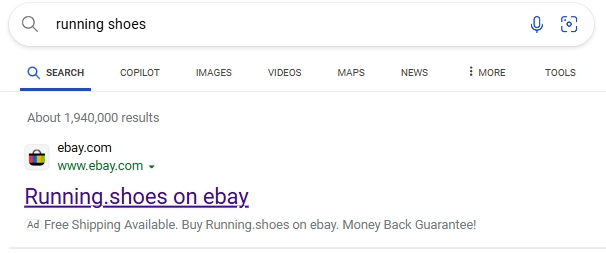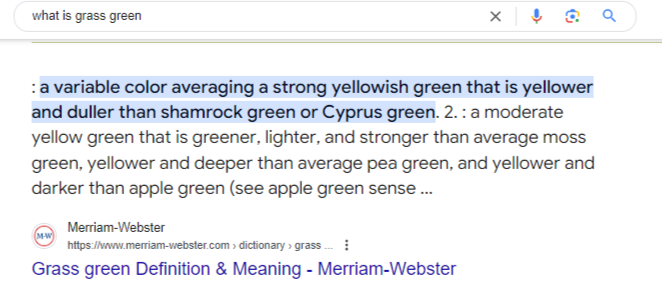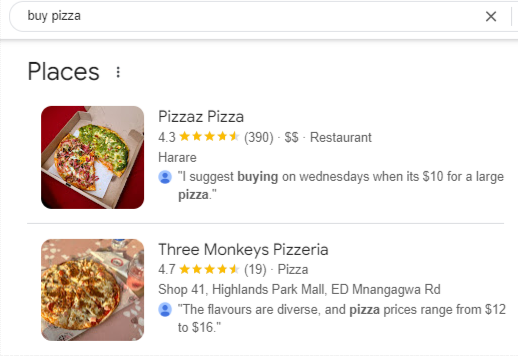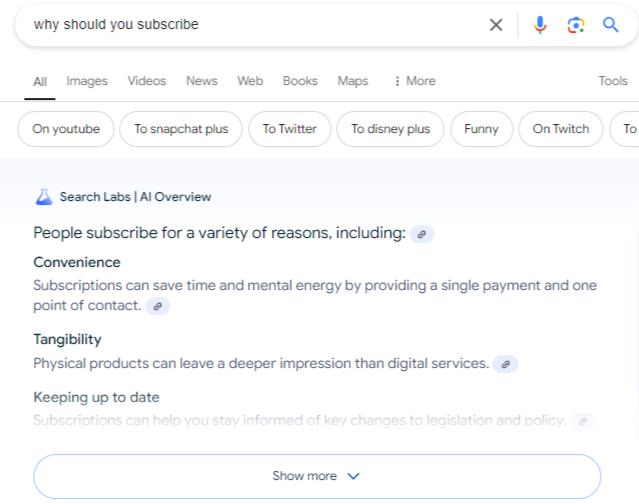In today’s tech-driven world, where almost everything can be found with a simple click, it is more crucial than ever to promote your business online.
With, an estimated 7.5 billion people projected to own a smartphone by 2026 the potential for increased traffic to your business is substantial.
But how do you do it?
Well with Search Engine Optimization (SEO) – a necessary practice to improve your websites visibility online. Although it may sound simple, SEO involves a range of strategies and techniques to increase organic (non-paid) traffic to your website.
Once you dive in, the world of SEO can become gravely complicated, but this brief guide is meant to provide you with beginner’s insight into the fundamental concepts and strategies to get you started.
Table of Contents
- What is SEO?
- How Search Engines Work
- Key Aims of SEO
- Importance of SEO
- Most Important Ranking Factors for SEO
- SEO Execution
So…
1. What is SEO?
Search Engine Optimization, as its name suggests, is about search engines such as Google and Bing better understand your content to rank it in accordance with other content online accordingly.
It is crucial for driving traffic to a website by improving its ranking in search engine’s results page (SERP’s). This process helps users find your site and determine whether they should visit it based on their search queries.
As mentioned, most people discover content online organically, so using top SEO practices is essential. This increases the likelihood that the content you publish will be found and chosen by consumers, thereby increasing your page’s organic traffic.
Understanding and utilizing these tools gives you a significant advantage.
While not all changes will have an immediate impact on your website’s search rankings, investing in SEO will be highly beneficial in the long run.
2. How Do Search Engines Work?
Before we discuss SEO practices, its helpful to understand how Search engines work. For your websites content to show in the search results, it first needs to be visible to search engines.
Here’s a quick rundown of how search engines operate:
- Crawling– Search engines send out ‘crawlers’ or ‘spiders’ to discover and visit pages across the web to gather different content from across the web. Think of these crawlers as digital explorers, collecting information from your site and others.
- Indexing– – Once the crawlers have gathered your content, it gets evaluated, organized, and stored in a vast, searchable database known as the ‘index.’ This index helps search engines understand and compartmentalize the content on each page constructively.
- Ranking– When someone searches for something, search engines look through their index and rank pages based on relevance and quality. They consider factors like keywords and user experience to present the most useful content in response to the search query.
Here’s an example to illustrate the process:
- Crawling: Google’s crawlers visit HealthyEats.com’s main page on “Healthy Smoothie Recipes.” This page includes links to other pages such as “Protein Smoothies” and “Delicious Green Smoothies.”
- Indexing: The main page also links to an article on NutritionToday.com about superfoods to add to smoothies. Google’s crawler follows this link to discover and index the external article. The context of the link helps Google understand that the article is relevant to healthy smoothies and superfoods.
- Ranking: Google’s algorithm uses the indexed pages and links to provide relevant search results. As a result, it will rank both the internal links from HealthyEats.com and the external link to NutritionToday.com highly for related searches like “best superfoods for smoothies” due to their relevance.
This process helps search engines deliver the most relevant results based on the content and links they discover.
When a search engine like Google finds numerous links from a specific type of content pointing to a particular resource, it becomes more confident that the linked resource is suitable for certain search terms. As a result, the search engine will rank that resource higher in response to those search queries.
Now that you have a solid understanding of how search engines work, we can finally dive into the exciting world of SEO!
3. What Are the Key Aims of SEO?
Search Engine Results
When responding to queries, Google presents results based on the following:
Organic Results
The most common results are traditional organic results. These results consist of links to web pages arranged in a specific sequence determined by Google’s algorithms, which assess the relevance of potential results to a user’s query.
Previously, Google would show 10 organic results per query. However, with recent updates, this number can vary because AI may provide an automated answer, along with a selection of links depending on the user’s device (e.g. mobile device or computer).
Both Google and Microsoft Edge display similar organic results, which you can see in the image below:

SERP Features
Beyond traditional links, search engines show unique elements known as SERP features. Here are a few you might be familiar with:
- Rich Snippets: Enhanced standard results with visual elements like review stars and price details.

- Paid Results: Text-based advertisements that appear at the top and bottom of the search results.

- Featured Snippets: Concise responses taken from websites, shown above the organic search results.

- Geographical Data: Maps and local business listings.

- AI Overviews: Simplified summaries of complex information provided by AI.

These search features provide direct answers, highlight rich visuals, and offer quick access to specific information, all of which enhance the user experience. To further your understanding read What are SERP Features? or What Is A SERP Feature? Common Types And How To Win Them – Moz and discover which SERPs your website might have.
4. What’s the Point of SEO?
Investing in SEO, regardless of your unique campaign goals, generally aims to achieve the following:
- Increasing Site Visibility
Consider how you browse the internet. Most of us only look at results to our queries on the first page of Google.
Many people don’t even scroll past the first few responses because they’re not aware there are additional pages. Therefore, it’s crucial to aim for a high ranking in the SERPs to increase the chances of being found.
Improving your visibility to your target audience is key to driving traffic to your website. - Driving Traffic to Your Website
“Traffic” refers to users visiting your website through organic SERPs.
The click-through rate (CTR) on your site can impact your rankings, as seen with Bing, and while Google’s stance on CTR and bounce rate (how quickly people leave your sight) is still debated here, it’s logical to aim for improved SEO as that brings more traffic to your online platforms. - Targeted Traffic to Your Website
To reduce bounce rates and convert visitors into customers, subscribers, or other desired actions, SEO focuses on attracting qualified and specific users.
Targeted traffic usually results in higher conversion rates, which are necessary for your business. - Greater User Experience
SEO can enhance your site’s clarity, visibility, and usability for visitors.
How your content appears in SERPs and how it looks and functions when users click through to your site are both influenced by optimization.
Investing in SEO helps ensure that your site delivers excellent service and provides a positive experience for users. - Improving Clarity for Search Engines
Remember how search engines crawl, index, and rank your content. There are three key elements of SEO that help with this:- On-Page SEO: This involves directly optimizing specific elements on your website, such as internal links, meta tags, and headers, to improve both user experience and search engine rankings.
- Technical SEO: This focuses on optimizing your website’s backend and infrastructure, such as using structured data, to facilitate crawling and indexing by search engines.
- Off-Page SEO: This involves optimizing elements outside your website, such as acquiring backlinks and engaging on social media, to boost your site’s authority and credibility.
And that’s just scratching the surface!
5. The Most Important Ranking Factors for SEO:
So, what factors contribute to SEO rankings?
The short answer is many, but let’s focus on a few key players:
- Quality Content: Always remember, content is king! High-quality, relevant, and fresh content tends to rank better in search results. This includes articles, blog posts, videos, and more.
- Keywords: Effective keyword use, including long-tail keywords and variations, helps search engines understand the context of your content.
- Mobile-Friendliness: With the rise of mobile usage, having a mobile-responsive site is essential for SEO success. If your site isn’t mobile-friendly, you’re missing out on potential traffic.
- Backlinks: Links from reputable websites that direct to your site signal to search engines that your content is trustworthy and valuable.
- User Experience (UX): A seamless and enjoyable experience keeps visitors on your site longer and reduces bounce rates, signaling to search engines that your site is worth ranking higher.
- Page Speed: Fast-loading pages enhance user experience and are favored by search engines.
- Domain Authority: Higher domain authority indicates credibility and trustworthiness, influencing how well your site ranks.
- Social Signals: While not a direct ranking factor, social shares can amplify your content’s reach, indirectly influencing SEO.
Now, let’s delve deeper into some of these essential elements!
Content
Yes, technical requirements are essential, but the most effective way to drive traffic to your website is by *offering engaging compelling, informative, and regularly updated content:
Whether it’s blog posts, product descriptions, or multimedia, your content must serve a purpose.
Here’s how to enhance your content for SEO, ensuring it aligns with E-E-A-T (Experience, Expertise, Authoritativeness and Trustworthiness) principles:
- Use Relevant Keywords: When building content, it’s essential to understand your brand and your goals. This clarity helps you identify your target audience and anticipate the phrases and words they might use when searching for your products or services.
By addressing these aspects, you can create content that meets their needs and build a community around it. Free tools such as Ahrefs and Surfer SEO can assist you on your journey as a beginner.
Identifying and incorporating relevant keywords naturally throughout your content helps search engines understand the topic of your pages, helping you rank higher. - Optimize Headlines and Meta Descriptions: Craft engaging titles and meta descriptions that entice users to click. These elements should contain primary keywords while being intriguing.
- Include Multimedia: Visuals like images, videos, and infographics can enrich your content and improve user engagement. Make sure to optimize images with descriptive file names and alt text to boost SEO!
- Regularly Update Content: Fresh content signals to search engines that your site is active, which can positively impact your rankings. Don’t overlook this—review older posts to keep them relevant and up to date.
- Create Shareable Content: Content that resonates with your audience encourages sharing, increasing your reach and backlinks. Include social sharing buttons to make it easy for users to share your content across their networks.
- Emphasize Experience: Share your personal insights, experiences, and case studies related to your industry. This matters as it establishes a connection with your audience and demonstrates real-world expertise.
- Showcase Expertise: Ensure your content is well-researched and backed by credible sources. Cite studies, link to authoritative websites, and highlight your qualifications or industry credentials to build credibility.
- Establish Authoritativeness: Gain recognition in your niche by creating high-quality content that addresses your audience’s needs. Engage with your audience through comments and social media, as this fosters community and boosts your authority.
- Build Trustworthiness: Transparency is essential. Include author bios, contact information, and privacy policies to build trust with your audience. Don’t forget to encourage customer reviews and testimonials, as they enhance your site’s trustworthiness.
Link Building
Remember the concept of EEAT?
Well, in order to gain authority and outrank other sites, effective link building is crucial.
Link building is a key factor for Google. When Google crawls, it discovers site pages through links from higher-profile pages. This process helps build your brand and nurture your audience, as trustworthy sites are more likely to link to other reputable sites, while spammy sites do the same.
So, what exactly is a link? Let’s cover the basics:
What Are Links?
External Links (also known as inbound links or backlinks) are connections from other websites that direct users to your site, serving as endorsements of your content’s credibility and authority.
Internal Links are hyperlinks within your own website, linking to other pages on the same site. They help users navigate your site and enhance its overall structure and SEO.
The value of a link depends on the significance and popularity of the site providing it. Key factors to consider include:
- Authority of the Linking Site: The more authoritative and popular the site linking to you, the more valuable the link.
- Page Authority: The authority of the specific page where the link is located.
- Anchor Text: The clickable text of the link, which should be relevant to the content it’s linking to.
- Link Placement: A followed link within the main content of a post is generally more valuable than a ‘nofollow’ link in the comments section of a blog post.
You can build links by requesting them (e.g., sending emails to website owners) or earning them through noteworthy content that others naturally want to link to. For strategies and tools on link building, check out Link Building for SEO: The Beginner’s Guide.
Remember, quality over quantity is key. Focus on building links from authoritative and relevant sources for the best results.
Technical Requirements
Now, let’s shift gears to the technical side of SEO.
Guess what? Getting your page into search results isn’t as difficult as it might seem, as long as your site meets the essential technical requirements:
- Googlebot is not blocked: Ensure Google’s web crawler ‘googlebot’ can access your site.
- Your page is accessible and functioning: Verify that all elements of your page are working properly.
- Your content is indexable: Make sure web pages can index your content. Use the URL Inspection Tool in Search Console to check this.
First, focus on making sure people and search engines can easily find and understand your site. Use descriptive URLs, a clear home page, and avoid duplicate content.
Consider building a sitemap, a file designed for search engines that lists all the URLs on your site, which helps users navigate more seamlessly. Key elements to include are:
- Menu: A primary navigation feature that should be clear and informative.
- Breadcrumbs: Useful for sites with a deep structure of nested pages.
- Categories: Group your content into logical sections to help users find related material easily.
Many content management systems (CMS) automatically handle these aspects for you.
Some more essential technical requirements to ensure your site is optimized for search engines are:
- Mobile Responsiveness: Ensure your site is mobile-friendly to accommodate users on all devices.
- Fast Loading Speed: Optimize your images, scripts, and server response time to enhance page loading speed.
- SSL Certificate: Secure your site with HTTPS to improve security and gain trust from users and search engines.
- Robots.txt File: Use a robots.txt file to guide search engines on which pages to crawl and index.
- Schema Markup: Implement schema markup to enhance your content’s visibility in SERPs.
These technical elements are critical for providing a seamless experience for both users and search engines.
Again, we’re just scratching the surface here. For more in-depth information on essential technical criteria like mobile-friendliness, page speed, and title tags, consider exploring Technical SEO.
Other Things to Consider
As you venture into SEO, don’t forget these important considerations:
- Local SEO: If you have a local business, optimize your site for local searches. Create a Google My Business account and include location-based keywords.
- User Intent: Understanding user intent is vital. Ensure your content addresses the specific needs and questions of your audience.
- Analytics and Tracking: Use tools like Google Analytics to monitor traffic, user behavior, and conversion rates. Analyzing this data helps you make informed decisions.
- Avoid Overloading with Ads: Don’t bombard your page with ads. Excessive advertisements can distract users, complicate their experience, and prevent them from reading or exploring your website further.
- Focus on Relevance, Not Trends: Instead of chasing industry trends, focus on understanding what search engines return for your top keywords and important queries. Analyze the top competitors for these terms and aim to differentiate your brand so you stand out in search results and provide a more relevant source for users.
- Promote Your Content: Encourage the discovery of your content by promoting your site.
- Personalization: This plays a significant role in search results, as Google customizes search results based on past search history. Consequently, users may see varying results depending on their previous interactions with your site.
- Social Interaction: Content that is frequently shared tends to rank higher in search results. Boosting social engagement can positively impact your site’s visibility.
- Offline Activities: Google may track offline activities, including in-store visits. For instance, Google can monitor Android users and Apple users with Google Maps installed, noting if a user visits a location after performing a search. – This data is reflected in features like the “Popular Times” section in the Knowledge Panel, which shows how busy a location typically is at different times of the day based on aggregated user data.
Remember, SEO is a long-term game. Patience and persistence are key!There are other ways to encourage your contents discovery like:
6. SEO Execution
Finally, to really nail your SEO, start by getting a clear understanding of the website’s objectives and your client’s needs.
Here’s a streamlined approach to effective SEO execution:
- Set Your Goals: Clearly outline what you want to achieve with your SEO efforts. Whether it’s increasing organic traffic, improving search rankings, or boosting conversions, having specific goals will help shape your strategy.
- Share Your Goals: Let your team or anyone involved know what you’re aiming for. This ensures everyone is aligned and focused on the same objectives.
- Develop a Strategy: Research and prioritize work that aligns with your goals. Plan and schedule content maintaining consistency and relevancy
- Track Your Metrics: Keep an eye on how things are going with tools like Google Analytics or Search Console. Watch your traffic, rankings, and user behavior to see what’s working and what needs tweaking.
- Check Your Site’s Health: Regularly review the health of your website to make sure it is running well. Check for technical issues, content gaps, and opportunities for improvement. Tools like Screaming Frog or SEMrush can be useful for this.
- Practice, Practice, Practice: SEO is not a one-time thing, it is an ongoing process. Keep refining and adjusting your strategies. Use performance data, changes in search engine algorithms and industry trends to keep your SEO efforts effective and relevant.
- Seek Professional Help: If SEO seems overwhelming, consider hiring an expert or agency to guide your efforts.
By following these steps, you’ll be well set to optimize your website effectively and reach your targeted goals.
Conclusion
And that wraps up our beginner’s guide to SEO!
I’d like to hear from you now.
Is there anything you would like for me to explain in detail?
Let me know by dropping a comment below!


